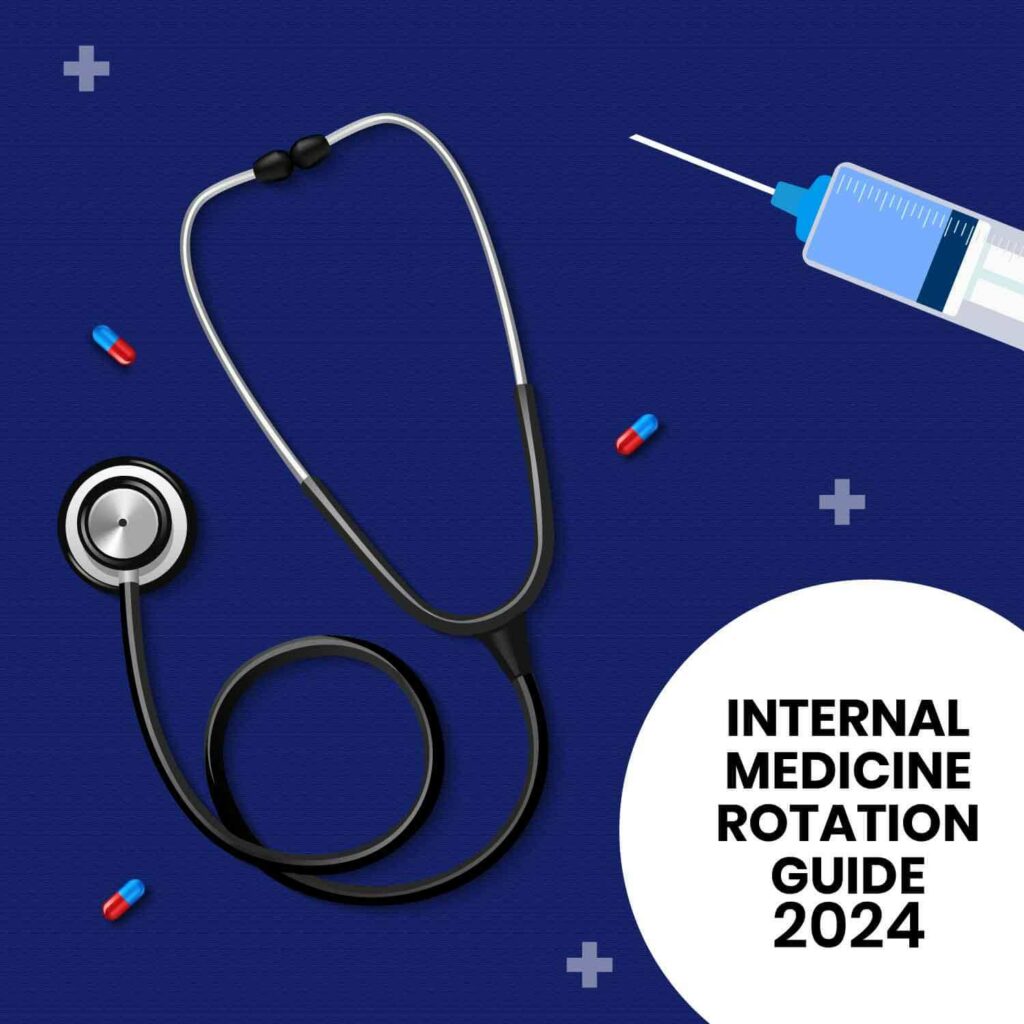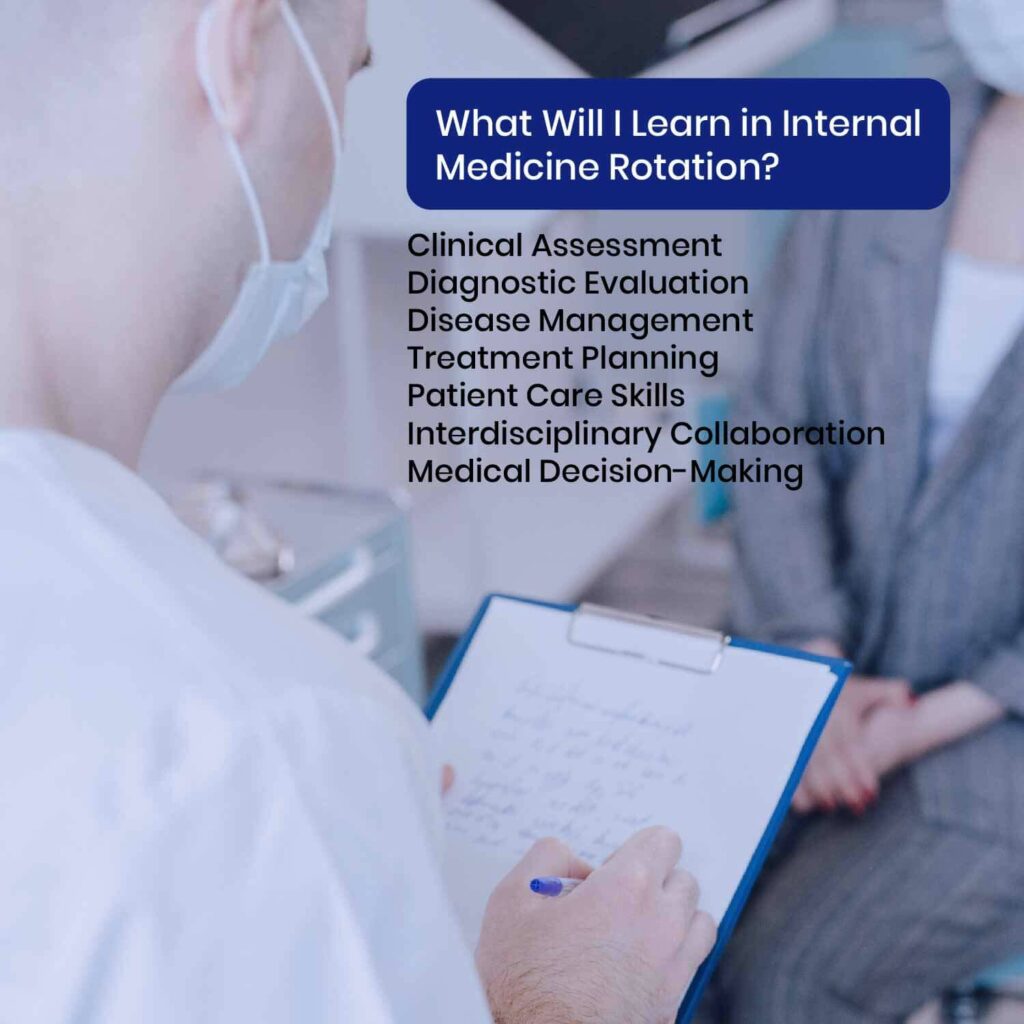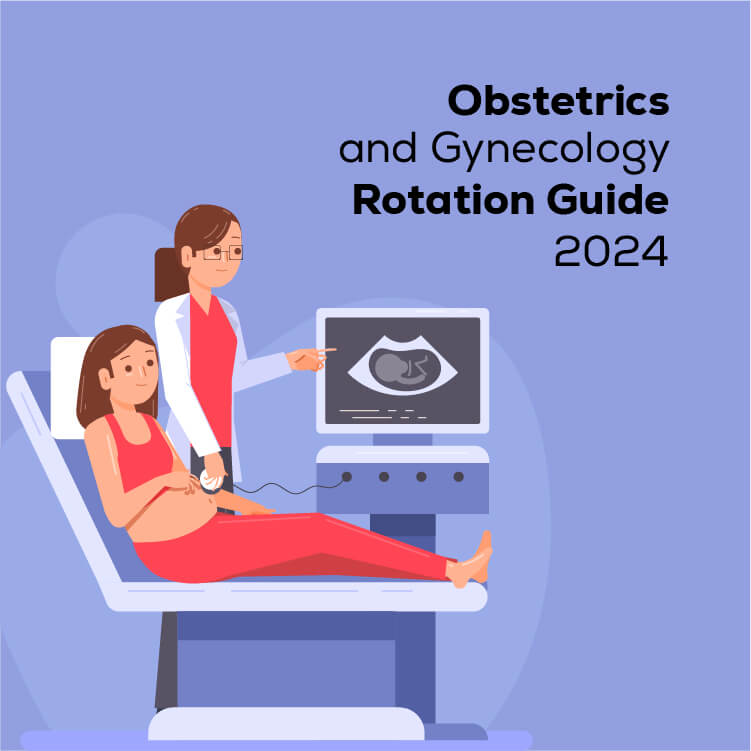
Table of contents
Internal medicine doctors, similar to family medicine practitioners, serve as generalists, comprehensively understanding the interrelation of organ systems and dedicating significant time to patient care. This clerkship serves as a gateway to various specialties with internal medicine content comprising a substantial portion of the USMLE 2 CK exam. Through this clerkship, medical students acquire a broad spectrum of medical knowledge and insight into the daily responsibilities and challenges faced by internal medicine physicians. In this guide, we will explore the key aspects of internal medicine rotation, including what to expect, how to excel, and tips for success on the clerkship. Whether you’re a medical student preparing for your internal medicine rotation or a future physician seeking to enhance your clinical skills, this guide will provide you with valuable information and resources to make the most of your experience
What is Internal Medicine Rotation?
Internal medicine encompasses the diagnosis, treatment, and prevention of a wide array of diseases and illnesses that impact adult patients. The Internal Medicine rotation is a vital component of medical education for third or fourth-year students, offering hands-on experience in diagnosing and managing a wide range of adult medical conditions. Under the supervision of attending physicians and residents, students work across outpatient clinics, inpatient wards, and specialty units. They gain skills in history-taking, physical examination, diagnostic interpretation, and treatment planning. They engage in the management of acute and chronic illnesses. This helps them refine their clinical reasoning and communication abilities. Overall, the rotation prepares students for future careers in internal medicine by providing practical exposure to real-world clinical practice and reinforcing foundational medical knowledge.
When Should I Start Applying for an Internal Medicine Clerkship?
To ensure a successful application process for an Internal Medicine clerkship, it is recommended to start the planning process in the early months of your third year of medical school. Start by researching different clerkship sites and their respective application requirements. These will include things like deadlines, prerequisite courses, and application materials.
Consider factors such as location, affiliations, clinical experiences offered, and faculty expertise when selecting potential clerkship sites. Some medical schools have established partnerships with specific institutions for clerkship placements, while others offer flexibility for students to choose from a variety of sites. Keep in mind that Internal Medicine clerkships are highly competitive, especially at renowned institutions or in popular locations. Therefore, it’s advisable to submit your applications as early as possible to increase your chances of securing a spot. By taking a proactive approach and starting the application process early, you can maximize your opportunities for a successful Internal Medicine clerkship experience. Keep in mind that it is a very important rotation, so don’t delay pursuing it and plan to opt for it in the early third year.
What Will I Learn in Internal Medicine Rotation?

Internal medicine doctors diagnose, treat, and manage a broad spectrum of medical conditions affecting adults. This clerkship aims to give students insight and practice into the same. During an Internal Medicine rotation, medical students are taught diagnosis, treatment, and management of a wide range of medical conditions affecting patients. Some of the key areas covered during this rotation include:
- Clinical Assessment: Students will learn how to take comprehensive medical histories, perform thorough physical examinations, and interpret findings to make diagnoses.
- Diagnostic Evaluation: They will gain experience in ordering and interpreting diagnostic tests such as laboratory tests, imaging studies (e.g., X-rays, CT scans, MRIs), and invasive procedures (e.g., biopsies, and lumbar punctures) to aid in diagnosis and treatment planning.
- Disease Management: Students will participate in the management of acute and chronic medical conditions commonly encountered in internal medicine practice. These include cardiovascular diseases, respiratory disorders, endocrine disorders, gastrointestinal ailments, infectious diseases, renal disorders, rheumatologic conditions, and neurological disorders.
- Treatment Planning: This includes developing evidence-based and tailored treatment plans.
- Patient Care Skills: Students are taught to develop skills in patient communication, counseling, and education.
- Interdisciplinary Collaboration: Students will learn to collaborate with other healthcare professionals, including attending physicians, residents, nurses, pharmacists, etc.
- Medical Decision-Making: This includes refining clinical reasoning skills to make informed medical decisions and manage complex medical cases effectively.
Overall, your Internal Medicine rotation will provide students with a comprehensive understanding of adult medicine, preparing them for the challenges and responsibilities of clinical practice.
How Can I Excel on the Internal Medicine Clerkship?
The Internal Medicine clerkship is crucial not only for those interested in the specialty but also for its significant impact on the Step 2 CK exam, with 50-60% of questions covering internal medicine topics. With Step 1 now pass/fail, excelling on the internal medicine Shelf exam is essential to be prepared for Step 2 CK. Additionally, competencies gained in this rotation, such as interpreting ultrasound scans and taking thorough medical histories, have broad applications across multiple specialties, including cardiology, critical care, diagnostic radiology, and psychiatry.
To excel in the Internal Medicine clerkship, prioritize patient care by actively engaging in clinical activities and seeking learning opportunities. Develop strong clinical skills through thorough history-taking, physical examination, and patient presentation. Stay organized, seek feedback, and communicate effectively with patients and the healthcare team. Additionally, stay updated on clinical guidelines, seek interdisciplinary collaboration, and prioritize self-care to maintain well-being and performance throughout the clerkship.
During rounds, actively engage with attendings’ questions to assess knowledge gaps and address them through further study. Utilize Anki decks and resources like Divine Intervention and Emma Holliday’s review sessions for a comprehensive review. Consider pocketbooks or apps like UpToDate and AMBOSS for on-the-go reference. If available, explore outpatient rotations to refine interests, identify subspecialty preferences, and network with physicians
How to Clear the Internal Medicine Shelf Exam?
To excel on the Internal Medicine Shelf Exam, stick to a structured study approach and use a variety of high-quality resources. Start by familiarizing yourself with exam conditions through practice tests, such as Clinical Mastery Self-Assessments. Then, focus on comparing and contrasting commonly tested diseases, developing systematic approaches to chief complaints, and employing test-taking strategies. For study materials, consider using comprehensive review books, online question banks, and educational videos from reputable sources like Divine Intervention and Emma Holliday. Additionally, explore pocketbooks or apps for on-the-go reference. Combining these resources with a consistent study routine and strategic test-taking approach can enhance your preparation and increase your chances of success on the Internal Medicine Shelf Exam.
You can learn more about the shelf exam and tips to clear it here.
FAQs – Internal Medicine Rotation
Here are some of the commonly asked questions about internal medicine rotations:
How long is internal medicine rotation?
The duration of internal medicine rotations typically lasts between four to eight weeks, depending on the medical school curriculum and program requirements. Medical students may have the flexibility to adjust the length of their rotation based on their educational goals and scheduling preferences.
What is the toughest aspect of internal medicine residency?
The inpatient ward is often considered the most demanding aspect of internal medicine residency. This setting requires residents to manage a high volume of patients with a diverse range of diseases and medical conditions, often under time constraints and with limited resources. Students need to have strong clinical skills, effective time management strategies, and the ability to work efficiently with teams
What is the rotation for UCLA internal medicine? What is the rotation for UCLA internal medicine?
The internal medicine rotation at UCLA provides seniors with an opportunity to work in both inpatient and outpatient settings. Seniors have the opportunity to work closely with attending physicians, residents, and other healthcare professionals, participating in patient care, rounds, and educational activities. All interns spend two to four months at the UCLA Medical Center, Olive View Medical Center, and the West LA VA, gaining valuable clinical experience and developing their skills as future physicians.
Conclusion
In conclusion, success on the Internal Medicine Shelf Exam requires a combination of thorough preparation, strategic study techniques, and the utilization of high-quality resources. Leveraging comprehensive review materials and reputable resources will further enhance your preparation and ensure strong performance on the exam. With dedication and diligence, you can confidently approach the Internal Medicine Shelf Exam and achieve your academic goals in medical education.



